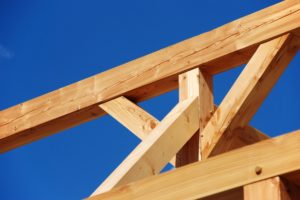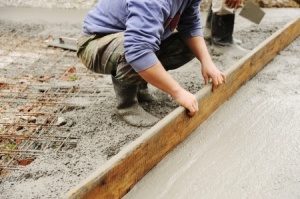When you look at the types of rubber out there, the choices (and the strange names/abbreviations) may seem a bit staggering.
Luckily, we can help. We put together a few tips below about rubber roofing materials.
Three Examples of Rubber Roofing Materials
1. Thermoset membranes
A thermoset membrane regains its shape after stretching. The most common type of thermoset roofing material is known as EPDM. EPDM is a single-ply roofing material made of elastomeric polymer.
Let’s see if we can break that down for easier consumption. Elastomeric means a synthetic material that has the elastic properties of natural rubber. Polymer means compounds with large molecules, made of repeated simple units that form cross-chemical links. Manufacturers create the elastomeric polymer EPDM for roofing from ethylene, propylene, and a pinch of diene polymer. As you can see, it’s a lot easier to call it EPDM for short.
EPDM is useful on all roof shapes, slopes, heights and in any climate. Architects and contractors favor this material for new construction and for replacement roofs that are low-slope and commercial. Sold by the roll, manufacturers originally designed EPDM for use in commercial areas.
EPDMs have exhibited a long service life throughout its 40 years of use in the field. EPDM can resist fatigue, hail, ozone, weathering, wind damage, abrasion, extreme temperatures, fire, and UV rays. It also shows durability in the face of thermal shock. (That means it can withstand temperature changes in varying degrees that cause different parts of the roof to expand at different rates.) Resistance to thermal shock means the product resists cracking and breaking in the face of such temperature changes.
2. Chlorosulfonated polyethylene (CSPM)
Another type of synthetic rubber roofing material is chlorosulfonated polyethylene, also known as Hypalon. It resists fire, oil, microorganisms, ozone, inorganic acids, light, and is impermeable to gas.
Experience over the years, however, has shown a few problems with Hypalon in shrinkage and in chalking where exposure to light causes the loss of the protective top layer. The chalking and shrinking also make it difficult to reseal. New technologies are now available to help solve the reseal issues.
CPSM is used for commercial/industrial buildings or institutions.
3. Rubber shingles
As an alternative to asphalt shingles, manufacturers make rubber shingles entirely of rubber or recycled rubber from tires. They usually add binders, UV inhibitors, and colors which sometimes create the look of wood or other materials.
Rubber shingles are relatively new to the residential market. They resist hail, wind, heat, snow, rain, cracking, mold, moisture, and discoloring. Because they are often made from recycled tires, they are also eco-friendly.
Roofers use rubber shingles exclusively on slanted roofs.
Comparing Warranties on Rubber Roofing
- EPDM has warranties ranging from 5 to 30 years. The 30-year option is available on 90 ml product. The manufacturers base this warranty period on historical data.
- Hypalon’s warranty period ranges from 20-30 years.
- The warranty period for rubber shingles is up to 50 years, in most cases.
Comparing Installation Costs on Rubber Roofing
- EPDM (synthetic rubber) has the lowest installation cost per square foot, about $.50 – $1.50 per square foot for the roofing material.
- Hypalon costs about $2.50 – $4.50 per square foot. It has a 20-30 year life, though, and is beneficial during that time in terms of reducing heating costs.
- Natural rubber and recycled rubber shingles cost about the same as EPDM.
If you would like to speak with one of our roofing experts about materials, warranties, cost, or anything else roofing, please feel free to contact us. Our experts stand ready to help you with all of your roofing questions.




